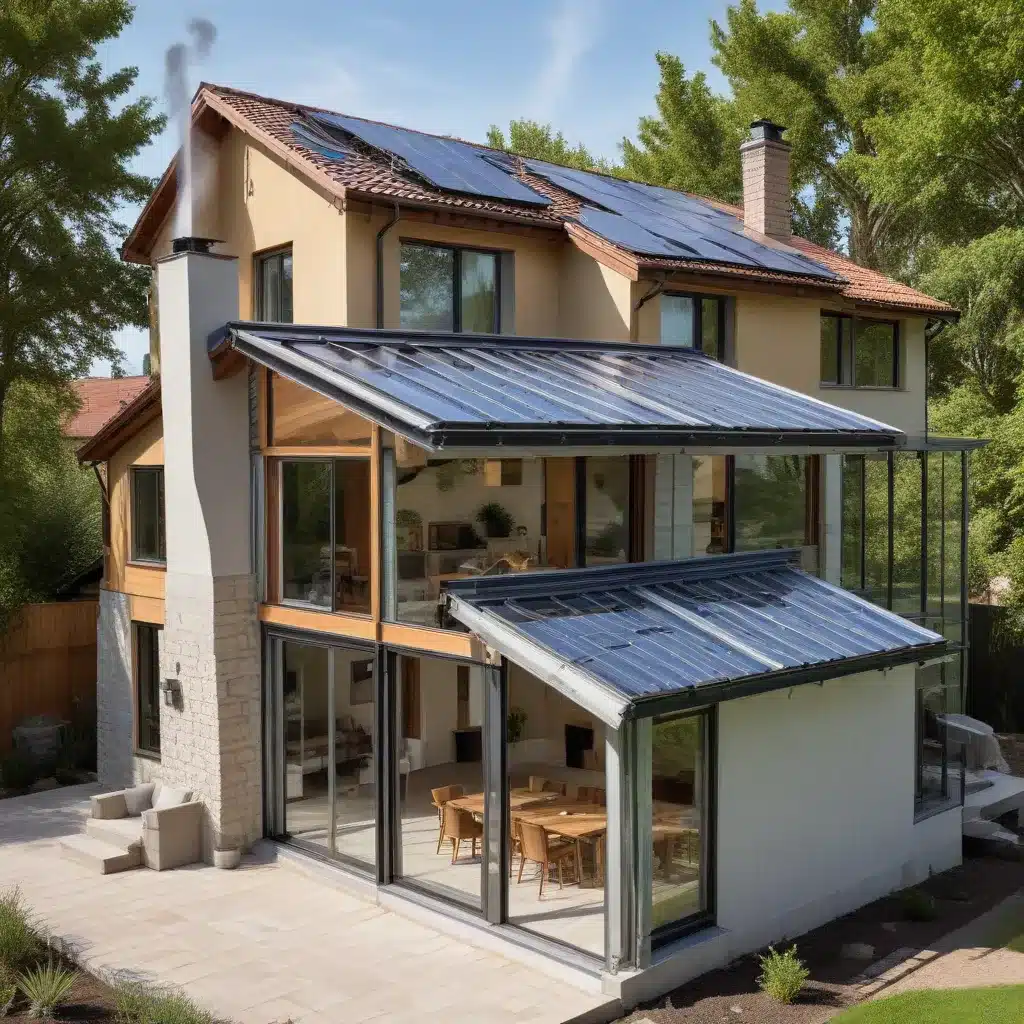
As an experienced home extension consultant, I’m excited to share my expertise on how you can create a sustainable and energy-efficient home extension. In this comprehensive guide, we’ll dive deep into the world of sustainable building materials, passive solar design, and the optimization of solar thermal systems.
Sustainable Building Materials
When it comes to home extensions, the choice of building materials is crucial. Opting for sustainable, renewable, and energy-efficient materials not only reduces your carbon footprint but also ensures the long-term durability and performance of your extension.
Renewable Resources
One of the key principles of sustainable building is the use of renewable resources. This includes materials like timber, bamboo, and straw bales, which can be replenished naturally over time. These materials often have a lower embodied energy compared to traditional building products, making them a more environmentally-friendly choice.
Energy-Efficient Materials
Insulation is a critical component of any sustainable home extension. Materials like mineral wool, cellulose, and rigid foam can significantly improve the thermal performance of your home, reducing energy consumption and heating/cooling costs. Additionally, choosing energy-efficient windows and doors with high-performance glazing can further enhance your extension’s thermal efficiency.
Circular Economy Principles
The concept of a circular economy is gaining traction in the construction industry, where the focus is on minimizing waste and maximizing the reuse and recycling of materials. When planning your home extension, consider using reclaimed or salvaged materials, such as reclaimed timber, bricks, or tiles. This not only reduces the demand for new resources but also diverts waste from landfills.
Building Design Considerations
Sustainable home extension design goes beyond just the choice of materials. It also encompasses strategies that harness the power of natural resources to optimize energy efficiency and occupant comfort.
Passive Solar Design
One of the most effective ways to improve the energy performance of your home extension is through passive solar design. This approach involves strategically positioning and orienting your extension to take advantage of the sun’s energy for heating and lighting. This can be achieved through the placement of large windows, the use of thermal mass materials, and the incorporation of overhangs or shading devices to control solar gain.
Thermal Insulation
Ensuring proper thermal insulation is crucial for maintaining a comfortable and energy-efficient home extension. In addition to the insulation materials mentioned earlier, you can also consider innovative solutions like vacuum insulated panels or aerogel insulation, which offer exceptional thermal performance in a compact form.
Ventilation Strategies
Proper ventilation is essential for maintaining indoor air quality and regulating temperature. Strategies such as cross-ventilation, stack effect ventilation, and the use of energy-efficient mechanical ventilation systems can help improve the air quality and comfort of your home extension.
Solar Thermal Systems
One of the most promising sustainable technologies for home extensions is solar thermal systems. These systems harness the power of the sun to provide hot water and space heating, reducing your reliance on traditional energy sources.
Solar Collector Technologies
There are several types of solar collectors that can be integrated into your home extension:
Flat-Plate Collectors: These are the most common type of solar collectors, consisting of a dark-colored absorber plate enclosed in an insulated frame with a transparent cover.
Evacuated Tube Collectors: These collectors feature a series of glass tubes with a vacuum inside, which helps to minimize heat loss and improve efficiency.
Concentrating Solar Collectors: These collectors use mirrors or lenses to concentrate the sun’s energy onto a smaller absorber area, resulting in higher temperatures and increased efficiency.
System Integration
Solar thermal systems can be integrated into your home extension in various ways. They can be used to provide domestic hot water, space heating, or even a hybrid system that combines both functions.
For domestic hot water, the solar thermal system can be connected to a storage tank, where the heated water is then distributed throughout the home. For space heating, the solar thermal system can be integrated with a hydronic heating system, where the heated fluid is circulated through radiators or underfloor heating.
Optimizing System Performance
To ensure your home extension’s solar thermal system operates at its best, it’s essential to consider energy efficiency measures and proper maintenance.
Energy Efficiency Measures
Enhancing the thermal performance of your home extension through measures like improved insulation, high-performance glazing, and the incorporation of thermal mass can significantly improve the overall efficiency of your solar thermal system. Additionally, the use of controls and automation can help optimize the system’s operation, ensuring it operates at its peak performance.
Maintenance and Monitoring
Regular inspections and maintenance of your solar thermal system are crucial to maintain its optimal performance over time. This includes cleaning the solar collectors, checking for any leaks or damage, and ensuring the system’s components are functioning correctly. Additionally, energy monitoring can provide valuable insights into the system’s performance, allowing you to make informed decisions about any necessary adjustments or upgrades.
Sustainable Home Extension Benefits
Investing in a sustainable home extension not only benefits the environment but also provides a range of advantages for you and your family.
Environmental Impact
By incorporating sustainable building practices and renewable energy systems, such as solar thermal, you can significantly reduce the carbon footprint of your home extension. This contributes to a healthier planet through reduced energy consumption, resource conservation, and waste minimization.
Occupant Comfort and Health
Sustainable home extensions prioritize the well-being of their occupants. Through strategies like passive solar design, improved indoor air quality, and the integration of biophilic design elements, you can create a comfortable, healthy, and rejuvenating living environment for you and your family.
Whether you’re planning a new home extension or looking to retrofit an existing one, incorporating sustainable building practices and solar thermal systems can be a transformative step towards a more energy-efficient, eco-friendly, and comfortable living space. To learn more about our home extension services and how we can help you achieve your sustainable goals, please visit https://abc-home.co.uk/home-extension/.
















